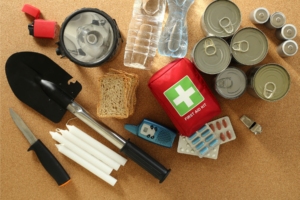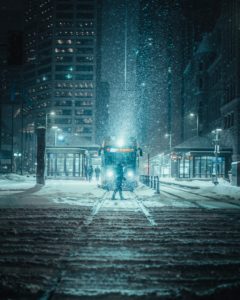August 25, 2021
A natural disaster is never something that you want to find yourself in the middle of, however it’s important to be prepared when one does occur. Some natural disasters can’t be planned for, while others can.
What is a natural disaster?
Natural disasters are related to weather that occurs naturally across the planet. Wildfires, hurricanes, tornados, flooding, earthquakes, tsunamis, volcanos, ice storms, drought and extreme heat are all considered natural disasters along with many others. Some geographical areas may be at higher risk than others for certain natural disasters. Coastal areas have a higher risk of flooding during tropical storms and hurricanes while other areas, like Tornado Alley, have a higher risk of Tornados. There are simple ways that you can plan for a natural disaster and be ready if one comes up unexpectedly.
1. Make a Plan
The first step in being ready for a natural disaster is to make sure you develop an emergency plan. Once a plan is developed for any situation, make sure everyone living in the household knows the plan and knows what to do if a disaster strikes. Different types of disasters may require different plans so it’s a good idea to create multiple plans depending on what you may need to react to. Keep in mind that your physical location may also impact your plan. For example, if you live on a shoreline, there may be a chance that you need to evacuate. In this case, knowing the evacuation routes and the stations or websites to find this information is beneficial for your safety.
2. Education
While it’s essential that adults understand and know how to be prepared for a natural disaster, it’s also important for kids to be ready as well. Teach your kids about being prepared in a fun way with games that will help them learn what a disaster is, and how to be prepared for it! Learn more here. Understanding safety and emergency plans helps them feel safer, and in the event of an emergency, they’ll know what to do, making it easier for you.
3. Build a kit
Building an emergency kit to keep in your home and car helps prepare you for natural disasters that you may not have advanced warnings about, such as tornado’s or earthquakes. Check out this handy list of items that should be in every emergency kit.
A few extra items you might want to consider are a list of emergency contacts, standard medications, and if you have kids, make sure there are supplies for them to entertain themselves with (books, coloring, puzzles, etc.).
Store your kit in a cool, dry area. Periodically, you should check for expired food items and replace them as needed. Occasionally you should re-evaluate your needs and make sure that your emergency kit has everything you or your family will need during an emergency.
4. Watch the weather
When an impending storm is coming, it’s important to keep an eye or an ear to the weather reports. Often times storms can weaken, strengthen or change directions which could impact how hard your area is hit. Know what stations to listen to for updated reports and what local stations will have evacuation information if you live in areas where evacuation might be necessary. When you know a storm is coming, take any necessary precautions needed such as making sure you have food, water, and other essential items ahead of time so you don’t end up short.
5. Food Safety
Food safety is a major concern during natural disasters or storms where you could lose power for a prolonged period of time.
Once the power returns, check the internal temperatures of your refrigerator and freezer. If the temperatures are still at or below the designated temps, then your food is fine. If the temperature is above normal temps, throw out anything that has gone bad such as;
In the event that your home was flooded, throw away any food that has touched flood waters. Flood waters are often contaminated with dirt, oils, and other harmful substances that you would not want to ingest through contaminated food. Any food that is stored in non-waterproof containers should be thrown out. This means anything with a screw-cap, snap lids, pull tops, or crimped tops. Items that are stored in cardboard containers such as milk and juices should also be thrown out. Check any cans for damage such as swelling, leakage, punctures, extensive rusting or crushing/denting severe enough to prevent normal stacking or opening.
For an easy to follow chart, visit foodsafety.gov.
6. Outdoor Safety
While a lot of focus is spent on indoor precautions, it’s also necessary to think about outdoor precautions as well.
7. Winter Weather

Winter brings on a new set of weather that can have an impact on you and your home. Be prepared by updating your emergency kit and making sure you are stocked up on anything you might need.
If you have a generator, make sure you have gas or propane ahead of time to avoid long lines at the gas station. Generators should only be run outside, they should never be put indoors. Run your generator once every few months to make sure it is running properly. You don’t want to find out it doesn’t work when you need it most!
The StayWell Health Center Team